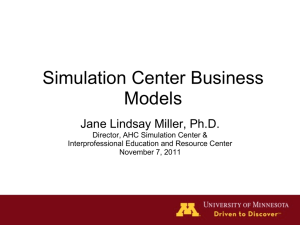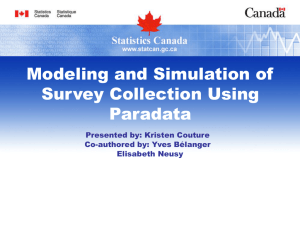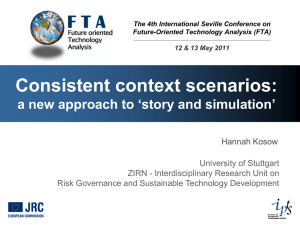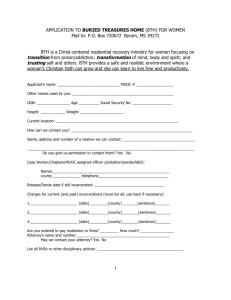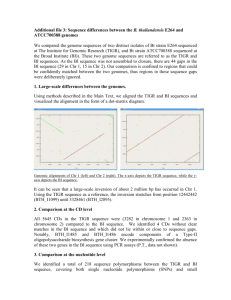Microsimulation Collection Project
advertisement
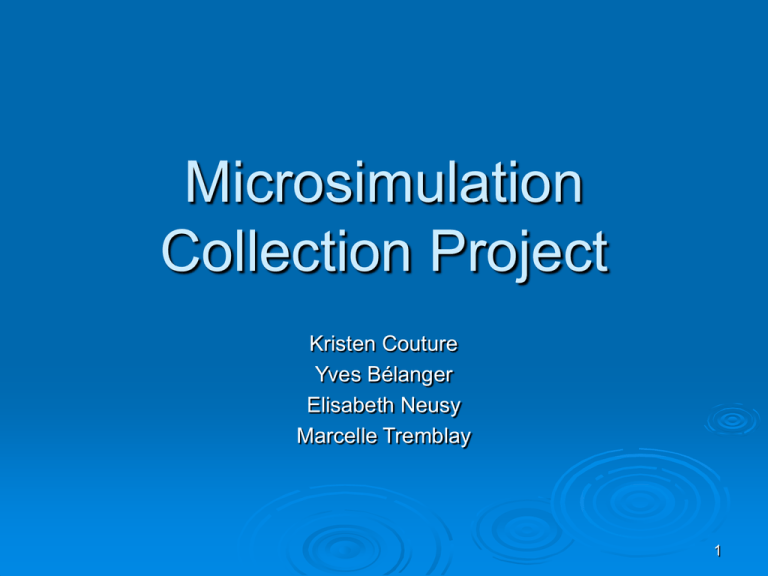
Microsimulation Collection Project Kristen Couture Yves Bélanger Elisabeth Neusy Marcelle Tremblay 1 Outline Overview Models created prior to Simulation Call Outcomes Call Duration Simulation Model SAS Simulation Studio program overview Aspects of Simulation Some Early Results Conclusions and Future Work 2 Overview What Construct a simulation model that will represent the CATI collection process using SAS Simulation Studio Why are we trying to do? are we doing this? To attempt to find ways to optimise collection activities that will make collection more efficient within a controlled environment 3 Overview Questions we are trying to answer: What effect do time slices have on the collection process? How does the distribution of interviewers affect collection? How does the introduction of a cap on calls affect the overall response rate? 4 Steps to Building Simulation Pre-existing BTH from Survey (2004 CSGVP BTH) Model Call Outcomes Model Call Duration Simulation Collection Parameters 5 Modelling Call Outcomes • • 5 outcomes: Unresolved, Out of Scope, Refusal, Other Contact, Respondent Modelled Using Multinomial Logistic Regression and CSGVP 2004 BTH i = 1..n j = 1..k • 7 parameters entered into the model Parameters Data Set 6 Modelling Call Outcomes Calculate probability for each possible call outcome using estimated betas and collection parameters 7 Modelling Call Duration Use 2004 CSGVP BTH Draw histograms for each outcome Use Probability Plots to Determine Distribution and Parameters Response Histogram N E W C O D E =5 Normal Probability Plot 2. 5 2. 0 P E R C D 70 U 60 RD 50 U 40 AR A P 1. 5 e r c e n t 1. 0 5 T TI I E N 0. 5 T 30 O N 20 O 10 N 0 0. 001 0. 01 0 1. 25 5. 25 0. 1 1 5 10 25 50 75 90 95 99 99. 9 99. 9999. 999 9. 25 13. 25 17. 25 21. 25 25. 25 29. 25 33. 25 37. 25 41. 25 45. 25 49. 25 53. 25 57. 25 61. 25 D U R A TI O N m al Per cent i l es NormalNorPercentiles Call Duration 8 SAS Simulation Studio 9 Aspects of Simulation Consists of… Input: user enters parameters for model Clock: Creates parameters from simulation clock Queue: calls wait to be interviewed Call Center: calls are made, outcome and duration of call is simulated Interviewer Agenda: change # of interviewers Time Slices (in progress): maximum number of attempts implemented for each time slice Output: BTH file 10 Input Allows user to enter parameters via SAS Data Sets Parameters Data Set Time Slice Data Sets 11 Clock Creates Time Parameters including Evening, Weekend, PM, and Time Slices by reading the current simulation time 12 Queuing System Cases are created and enter a queue waiting to be interviewed 13 Determining Call Outcome Determines Call Outcome: Unresolved Out of Scope Other Contact Refusal Respondent 14 Call Center Call is sent to Call Center where it is interviewed 15 Call Center User can change the number of interviewers during a specified time period 16 Finalizing Cases Outcome of Out of Scope or Respondent Reached Cap on Calls Residential: 20 Unknown: 5 Number of Refusals=3 Output is created in terms of SAS data set 17 SAS Simulation Demonstration 18 Demonstration Output 19 Simulation Example Create 10,000 cases and run the simulation for 30 days of collection Interviewers: Shift 1 (9am-12pm) : 10 Shift 2 (12pm-5pm) : 10 Shift 3 (5pm-9pm) : 10 *Note: No time slices in this example 20 Diagnostics Finalized Cases and Response Rate Distribution of Outcome Codes 21 Diagnostics Last Call Outcome Last Call Outcome by Original Residential Status 22 Changing Parameters Effect on changing the number of interviewers and days of collection 23 Conclusions Allows user to enter parameters into model Reproduce results similar to CSGVP 2004 Create a BTH file Change parameters and look at the effect 24 Future Work Improve the model by adding more parameters Produce results with time slices implemented to model to measure impact Add attributes to the interviewers such as English/French/bilingual and Senior/Junior Rearrange the cases in the queue so that they will be pre-empted at best time to call 25




